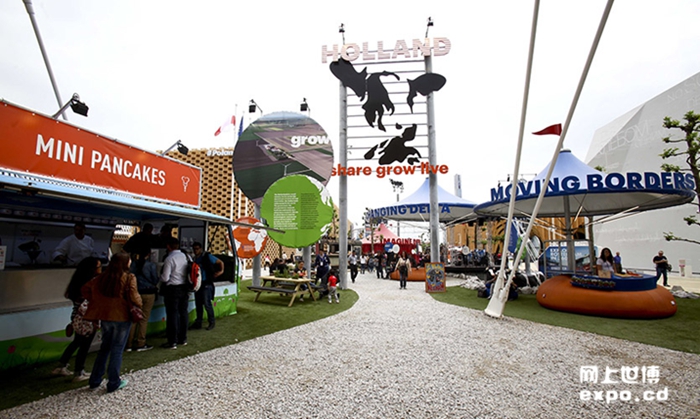
The pavilion consists of a series of food trucks, where it is possible to taste the typical Dutch products. The first is for pancakes or poffertjes followed by the one in which the traditional potato chips, Dutch fries, and meatballs, also fried, are made; all immersed in a festive atmosphere, with the lights and musicians playing on the Pavilion stage reflecting perfectly the soul of the typical Dutch festivals. At this point, visitors are invited to discover the contents of the first tent, the most important one, in which the aspects of technological progress in the Dutch agricultural sector are revealed. There’s a 3-star hotel for chickens and hens and videogames, to fight the boredom and hostile behavior of pigs, which are a positive expression of the protection of the health of the animals used to produce food. For Holland, innovation, new food sources and technological development are the heart of growth and strategies for the future.
The mirror maze: learning and having fun
A second square with the food trucks welcomes visitors with scents and dishes to enjoy. Here you ca find the worstenbrood truck, the typical bread and sausage of the town in which Vincent Van Gogh was born, and that of ABC, the alternative collective burger, in which the algae burger is prepared, along with Just Say Cheese, presenting all the famous Dutch cheeses. A second tent explains all the technologies promoted by Holland to support agricultural practices and food production that is, this time in the form of a carousel with a mirror maze that reflects the keywords of sustainable development.
A drink to talk about circular economy
The Molina, a Ferris wheel converted into a restaurant, is the heart of fun and awareness at the Holland Pavilion. To explain the circular economy through fun and entertainment, the Netherlands Pavilion proposes the consumption of food and drink while the Ferris wheel turns. Continuing on their tour, visitors can purchase water with the Join the pipe system, so when buying a bottle a second one is sent to poor schools in Africa. The visit ends with the shop selling the typical Dutch products, including various types of cheese and caramel waffles, a terrace and De Kas, the restaurant with the characteristic greenhouse shape.
暂无信息
